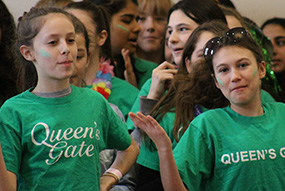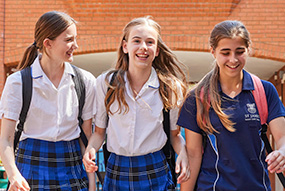We aim to provide an application process which is fair, clear, robust and accessible to children from all schools and backgrounds.
We are concerned about the pressure the 11+ application system can place on young children and the damage to learning which relentless ‘teaching to the test’ produces. We therefore seek to run a simple process with just one test, which provides a good tool of assessment to elicit information which can match candidates to schools best fitting their profile. We are interested not only in verbal and mathematical potential, but also in non-verbal ability, which often signifies the sort of creative and visual intelligence relating to problem-solving and design. The changing landscape of work needs all these aptitudes.
Important News for Entry in September 2026
In 2022 the Consortium introduced a new bespoke assessment process, for entry in September 2023 onwards, which goes beyond testing cognitive ability alone and seeks to discover a child’s potential in creative and critical thinking, analysis, synthesis and problem-solving. This test is 100 minutes in total and taken in the candidate’s current school, but where this is not possible, provision is made in all Consortium schools for candidates to sit the test there. Candidates can familiarise themselves with the Consortium online assessment using the ‘Familiarisation Materials’ link below.
Key dates for entry in September 2026
- Closing date for registrations: Friday 7th November 2025
- Consortium Assessment dates: One of Friday 28th November, Tuesday 2nd December, Thursday 4th December 2025
- Offer date: Friday 13th February 2026
- Deadline to accept: 12 noon on Wednesday 4th March 2026
Our selection process covers three complementary assessment approaches:
- An age-standardised measure of ability assessed through an online, adaptive, cognitive test followed by a non-adaptive section testing problem solving and creative and critical thought. The test is taken when the child is in Year 6 and should be sat at the child’s current school if possible. For those not able to take the assessment in their own school, it will be possible to sit the test at any Consortium school. The results will be shared with all schools at which the candidate is registered.
- A common reference form requiring, amongst wider contextual information on attitudes and character, detailed commentary on the candidate’s academic performance. Although not compulsory, it is hoped that this form will be widely used but feeder schools may use their own reference forms;
- An imaginative interview experience (individual to each senior school) which explores the skills, aptitudes and intellectual acuity of the candidates. Please note Francis Holland (Regent’s Park) , Godolphin and Latymer, and South Hampstead High School will select for interview from the assessment.







